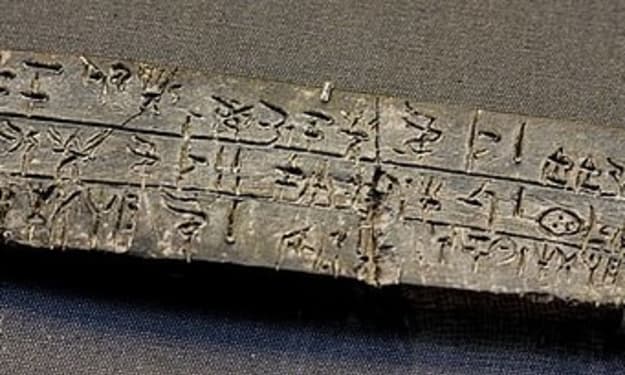Alice in Wonderland
A Journey Beyond the Looking Glass

Introduction
Alice's Adventures in Wonderland, commonly known as Alice in Wonderland, is a timeless tale penned by Lewis Carroll in 1865. This enchanting story has captivated audiences for generations, transporting readers to a fantastical world where logic is turned upside down, and the impossible becomes possible. Carroll's whimsical narrative and intricate wordplay invite readers to join Alice on her journey beyond the looking glass, exploring themes of identity, curiosity, and the absurdity of the adult world.
The Genesis of Wonderland
The origins of Alice in Wonderland are as captivating as the story itself. Charles Lutwidge Dodgson, better known by his pen name Lewis Carroll, was a mathematics lecturer at Christ Church, Oxford. The story was born during a rowing trip on the River Thames with the Liddell family, including a young girl named Alice Liddell. To entertain Alice and her sisters, Carroll spun an impromptu tale of a girl named Alice who falls down a rabbit hole into a fantastical world. Alice Liddell was so enchanted by the story that she asked Carroll to write it down, which he eventually did, thus giving birth to one of the most beloved children's books of all time.
A World Turned Upside Down
One of the defining features of Wonderland is its complete defiance of logic and reason. From the moment Alice falls down the rabbit hole, she encounters a series of bizarre and often contradictory characters and situations. This topsy-turvy world challenges Alice's understanding of reality and forces her to question everything she knows.
The White Rabbit, who Alice first sees running frantically while checking his pocket watch, sets the tone for the adventure. His peculiar behavior and constant worry about being late introduce Alice to the unpredictable nature of Wonderland. As she follows him, Alice's curiosity leads her through a series of transformations, both literal and metaphorical. She grows and shrinks in size after consuming various magical substances, symbolizing the confusion and instability often experienced during childhood and adolescence.
Characters That Defy Convention
Wonderland is populated by an array of memorable characters, each more peculiar than the last. The Cheshire Cat, with its enigmatic grin and ability to appear and disappear at will, serves as a guide of sorts, offering cryptic advice that often leaves Alice more bewildered than before. The Cat's famous line, "We're all mad here," encapsulates the essence of Wonderland, where madness is the norm and sanity is an anomaly.
The Mad Hatter and the March Hare, who Alice encounters at the never-ending tea party, further illustrate the absurdity of the world she has stumbled into. Their nonsensical conversations and disregard for time reflect Carroll's critique of Victorian society's rigid structures and conventions. The Queen of Hearts, with her frequent cries of "Off with their heads!", embodies the arbitrary nature of authority and power in Wonderland. Her irrational and tyrannical behavior serves as a satirical commentary on the capriciousness of those in positions of authority.
Themes of Identity and Self-Discovery
At its core, Alice in Wonderland is a story about identity and self-discovery. Alice's journey through Wonderland mirrors the journey of growing up, as she navigates a world that constantly challenges her perception of herself and her place in it. Throughout the story, Alice grapples with questions of identity, often wondering who she is and how she fits into the strange world around her.
This theme is most evident in the scene where Alice meets the Caterpillar, who pointedly asks her, "Who are you?" Alice's inability to answer this question highlights her internal struggle with her own identity. The Caterpillar's advice to "keep your temper" serves as a reminder that self-control and self-awareness are crucial in navigating the complexities of life.
Alice's encounters with various characters and her experiences in Wonderland ultimately lead her to a greater understanding of herself. By the end of the story, she emerges as a more confident and self-assured individual, ready to face the challenges of the real world.
Language and Wordplay
Lewis Carroll's mastery of language and wordplay is one of the hallmarks of Alice in Wonderland. His use of puns, riddles, and nonsensical rhymes adds a layer of humor and whimsy to the story, engaging readers of all ages. The playful use of language not only entertains but also serves to highlight the absurdity of the world Alice finds herself in.
One of the most famous examples of Carroll's wordplay is the poem "Jabberwocky," which Alice discovers in the sequel, Through the Looking-Glass. The poem is filled with invented words and phrases that, despite their nonsensical nature, create a vivid and imaginative picture. This inventive use of language encourages readers to embrace creativity and think outside the box, much like Alice herself.
Cultural Impact and Legacy
Since its publication, Alice in Wonderland has had a profound impact on literature, art, and popular culture. The story's imaginative world and unforgettable characters have inspired countless adaptations, including films, television shows, stage productions, and even video games. Each adaptation offers a unique interpretation of Carroll's work, ensuring that Alice's adventures continue to resonate with new generations.
The book's influence extends beyond entertainment, permeating various aspects of culture and society. Phrases like "down the rabbit hole" and "mad as a hatter" have entered the common lexicon, illustrating the story's enduring relevance. Alice in Wonderland has also been the subject of extensive academic analysis, with scholars exploring its themes, symbolism, and linguistic creativity.
Conclusion
Alice in Wonderland remains a beloved classic more than a century after its initial publication. Lewis Carroll's whimsical narrative, rich characterizations, and masterful use of language create a world that continues to captivate readers of all ages. Through Alice's journey beyond the looking glass, we are reminded of the importance of curiosity, imagination, and self-discovery. As we navigate our own wonderlands, we can take inspiration from Alice's adventures, embracing the unknown with an open mind and a sense of wonder.
About the Creator
Samson E. Gifted
SEG, is a talented writer, editor, and publisher known for his exceptional storytelling and keen eye for detail. With a passion for words and a commitment to excellence earning a reputation as a respected figure in the publishing industry.
Enjoyed the story? Support the Creator.
Subscribe for free to receive all their stories in your feed. You could also pledge your support or give them a one-off tip, letting them know you appreciate their work.






Comments (1)
Oh wow, I never knew it went back so much in time. Fascinating readA